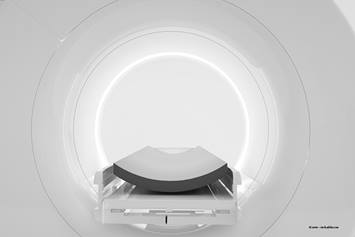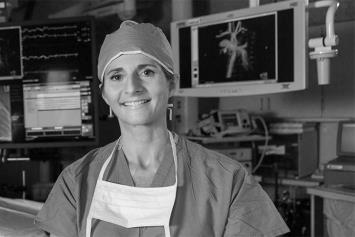Tenosynovial Giant Cell Tumors
Tenosynovial giant cell tumors (TGCTs) are rare. They cause painful swelling and lumps around joints, most commonly affecting elbows, knees, fingers or wrists.
What Are Tenosynovial Giant Cell Tumors?
Tenosynovial giant cell tumors (TGCTs) are a group of rare tumors that affect the joints. Although these tumors are usually not cancerous (benign), they can sometimes grow and cause damage to the joints and tissues around them. In very rare cases, TGCTs can transform into cancerous (malignant) tumors.
TGCTs affect one of three areas in the joint:
- Synovium: thin lining on the inner surface of the joints
- Bursae: small fluid-filled sacs providing cushion to joints and tendons
- Tendon sheath: thin lining surrounding the tendons
These tumors most commonly affect the knees, fingers, wrists and elbows.
The exact cause of TGCTs is unknown. Current research suggests there is a chromosomal abnormality causing an overproduction of a protein, CSF-1. Cells begin clumping together forming a tumor.
TGCTs are classified as localized or diffuse.
- Localized TGCTs, also called giant cell tumors of the tendon sheath, grow slowly and affect only the inside of joints. Localized TGCTs typically affect small joints, like the joints in your hand.
- Diffuse TGCTs grow quickly and can affect the inside and outside of the joint. Pigmented villonodular synovitis is a form of diffuse TGCT. The knee is most commonly affected.
TGCTs most commonly affect adults aged 30 to 50 but can occur in young children.
What Are the Signs and Symptoms of TGCT?
Signs and symptoms of TGCT are all related to the joint. These include:
- Pain
- Locking
- Swelling
- Popping
- Stiffness
- Instability
- Decreased range of motion
- Warmth and tenderness to the touch
How Is TGCT Diagnosed?
A history and physical exam are performed first. Next, imaging tests, such as X-rays, magnetic resonance imaging (MRI), computed tomography (CT) and ultrasound are conducted to see the tumor and affected joint.
Your doctor may also perform a joint aspiration, which involves taking a small sample of synovial fluid and examining it under a microscope. Synovial fluid is often bloody with TGCT.
A tumor biopsy confirms a TGCT diagnosis.
How Is TGCT Treated?
Surgery is the standard TGCT treatment to remove the tumor and damaged joint tissue. Radiation therapy and medication are other treatment options.
There are several surgical options for symptomatic TGCT:
- Arthroscopy: Arthroscopy is minimally invasive and ideal for localized TGCT. Several small incisions are made on the front of the knee. A camera goes through one incision, and surgical instruments go through the other.
- Open surgery: Open surgery is for large, widespread (diffuse) TGCTs that can’t be removed with arthroscopy. It is more invasive, with a large incision made in the back of the knee to remove the entire tumor and synovium.
- Combined arthroscopy and open surgery: A combination approach is commonly used for localized TGCT in the back of the knee. Your doctor will make incisions in the front and back of the knee.
- Total joint replacement: Total joint replacement is needed for advanced TGCT when the joint is permanently damaged. The damaged joint is replaced with material like ceramic or metal.
Follow-up care after surgery involves monitoring appointments and physical therapy to restore joint range of motion and leg strength.
Radiation therapy can be used before surgery to shrink the tumor or after surgery to destroy any remaining tumor cells. Intra-articular radiation therapy is typically used for TGCT. This means a radioactive substance is injected into the joint to destroy the tumor. Radiation therapy is used with caution in children because it can affect growth and increase the risk of cancer later in life.
One FDA-approved drug is available to treat TGCTs. It blocks the CSF-1 gene, preventing CSF-1 overproduction. Other drugs that block the CSF-1 gene are being tested in clinical trials.
TGCTs, especially the diffuse form, recur frequently, requiring additional treatment.



